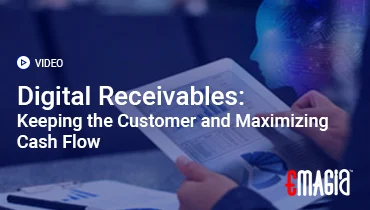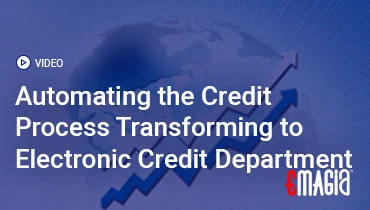In today’s commerce, accepting electronic payments is not merely a convenience; it’s a fundamental necessity. From bustling retail stores to expansive e-commerce platforms, businesses rely heavily on credit and debit cards to facilitate transactions. Yet, beneath the surface of seamless swiping and tapping lies a complex web of charges known as merchant account fees. These fees, often overlooked or misunderstood, represent a significant operating cost that can quietly erode profit margins.
For many business owners, the monthly statement from their payment processor can feel like deciphering an ancient script, filled with acronyms and seemingly arbitrary charges. Understanding what these charges are, where they come from, and how they impact your bottom line is crucial for financial health. While payment processing involves a variety of expenses, there are fundamental components that are almost universally applied, regardless of your provider or specific setup.
This comprehensive guide aims to demystify these omnipresent charges. We will delve into what constitutes Universal Merchant Account Fees, break down the various pricing models offered by processors, uncover common hidden fees that can surprise even seasoned merchants, and equip you with actionable strategies to effectively manage and reduce your overall cost of accepting credit cards. Get ready to gain the clarity and control you need to optimize your payment processing strategy and protect your hard-earned revenue.
Understanding the Core: What Are Universal Merchant Account Fees?
Before diving into the intricacies, let’s establish a clear understanding of the fundamental charges every business accepting card payments will encounter.
Defining Merchant Account Fees: The Cost of Payment Acceptance
Merchant account fees, often referred to as payment processing fees or merchant service fees, are the charges businesses pay to facilitate electronic transactions. When a customer uses a credit or debit card, a complex system involving multiple parties (the customer’s bank, the card networks, and your payment processor) works behind the scenes to authorize and settle the transaction. These fees compensate these parties for their roles, including handling transactions, managing fraud risk, and maintaining the payment infrastructure.
While the exact rates and pricing structures vary, certain components are almost always present, making them the Universal Merchant Account Fees you cannot entirely avoid, only manage.
The Three Pillars of Universal Merchant Account Fees
Regardless of your payment processor or pricing model, most of your payment processing costs will stem from three core categories:
- Interchange Fees:
- Who Charges: These are charged by the cardholder’s issuing bank (the bank that issued the credit or debit card to your customer).
- Purpose: They compensate the issuing bank for the costs and risks associated with approving the transaction, managing the cardholder’s account, and handling potential fraud or bad debt.
- Variability: Interchange rates are set by the card networks (Visa, Mastercard, etc.) and vary significantly based on numerous factors, including card type (e.g., standard, rewards, business, premium), transaction type (e.g., swiped, chipped, online, keyed-in), merchant category code (MCC), and transaction size. They typically represent the largest portion of your overall processing costs.
- Assessment Fees (or Network Fees):
- Who Charges: These fees are charged directly by the card networks themselves (Visa, Mastercard, American Express, Discover).
- Purpose: They cover the operational costs of the card networks, including maintaining their infrastructure, managing data security, and developing new payment technologies.
- Variability: Assessment fees are generally a small, fixed percentage of the transaction amount and are less variable than interchange fees.
- Payment Processor Markup (or Processor Fees):
- Who Charges: This is the fee charged by your chosen payment processor (e.g., Stripe, Square, PayPal, or a traditional merchant account provider) for their services.
- Purpose: It compensates the processor for facilitating the transaction, providing your merchant account, offering customer support, and providing other value-added services (like reporting, fraud tools, gateway access).
- Variability: This is the only portion of the fees that is truly negotiable and varies significantly between providers, based on their pricing model and your business’s transaction volume.
Understanding this fundamental payment processing fees breakdown is the first step toward gaining transparency and control over your payment costs.
Navigating Pricing Models: How Universal Merchant Account Fees Are Packaged
While the core components of Universal Merchant Account Fees remain consistent, payment processors package them differently through various pricing models. Choosing the right one is crucial for cost-effectiveness.
1. Interchange Plus Pricing: The Most Transparent Option
Often considered the most transparent pricing model, interchange plus pricing (also known as cost-plus pricing) separates the actual interchange fees and assessment fees from the processor’s markup. With this model, you pay:
- The exact, non-negotiable interchange fees (which vary per transaction).
- The exact assessment fees (which are usually fixed percentages).
- A fixed markup (e.g., a small percentage like 0.20% + $0.10 per transaction) added by your processor.
Pros: Provides maximum transparency, allowing you to see exactly what you’re paying to the networks versus your processor’s profit. Often the most cost-effective for businesses with higher transaction volumes.
Cons: Monthly statements can appear more complex due to varying interchange rates. Requires some understanding of how interchange works.
2. Flat Rate Processing Fees: Simplicity for Smaller Businesses
Flat rate processing fees involve a fixed percentage plus, sometimes, a fixed per-transaction fee, applied to every transaction regardless of card type or how it’s processed (e.g., 2.9% + $0.30 per transaction). The processor bundles all the underlying Universal Merchant Account Fees (interchange, assessment, and their markup) into this single, predictable rate.
Pros: Simple and easy to understand, making budgeting straightforward. Ideal for very small businesses with low transaction volumes or infrequent credit card sales.
Cons: Typically more expensive for businesses with higher transaction volumes, as you might overpay for transactions that would incur lower interchange rates on other models. Lacks transparency, as you don’t see the true breakdown of costs.
3. Tiered Pricing Merchant Accounts: The Least Transparent
Tiered pricing merchant accounts group transactions into different categories or “tiers” (commonly Qualified, Mid-Qualified, and Non-Qualified), each with its own rate. The tier a transaction falls into depends on factors like card type (e.g., standard vs. rewards card) and processing method (e.g., swiped vs. keyed-in). A standard card swiped in person might be ‘qualified’ (lowest rate), while a rewards card entered online might be ‘non-qualified’ (highest rate).
Pros: Can appear simple on the surface with only a few rates.
Cons: Highly opaque and often leads to higher, unpredictable costs. Processors have discretion over how transactions are categorized, leading to “downgrades” into higher-cost tiers. Generally the least recommended model due to its lack of transparency and potential for unexpected fees.
4. Subscription or Membership Pricing: For High Volume
In this less common model, businesses pay a flat monthly membership fee and, in return, gain access to wholesale interchange fees with a very small, fixed per-transaction fee markup. The percentage markup from the processor is often eliminated, making it highly cost-effective for businesses with very high transaction volumes.
Pros: Very transparent on a per-transaction basis (you pay true interchange plus a tiny fixed fee). Can result in significant savings for high-volume merchants.
Cons: The fixed monthly fee might be too high for businesses with lower transaction volumes, making it less cost-effective.
Uncovering Hidden Merchant Account Fees: What to Watch For
Beyond the primary processing models, hidden merchant account fees can silently inflate your overall cost of accepting credit cards. Vigilance is key to identifying and avoiding these often-overlooked charges.
1. Monthly or Annual Fees (Beyond Processing)
Some processors charge flat monthly or annual fees for account maintenance, statement generation, payment gateway access, or “customer support.” These are distinct from per-transaction processing fees and can add up, especially if your transaction volume is low. Always check for terms like “monthly service fee” or “annual fee.”
2. PCI Compliance Fees (and Non-Compliance Penalties)
PCI compliance (Payment Card Industry Data Security Standard) ensures secure handling of cardholder data. Processors may charge an annual or monthly fee for PCI compliance reporting or validation tools. More importantly, hefty “PCI non-compliance fees” can be levied if your business fails to meet the required security standards. Proactive PCI compliance is essential for both security and cost savings.
3. Setup and Equipment Fees
While some providers offer free setup or equipment, others charge upfront fees for setting up your merchant account or purchasing/leasing POS terminals. Lease agreements, in particular, can be expensive and difficult to terminate, often leading to paying far more than the equipment’s value over time.
4. Chargeback Fees and Retrieval Fees
When a customer disputes a transaction (initiates a chargeback), your processor will typically charge a non-refundable chargeback fee (often $20-$50), regardless of whether you win the dispute. If a customer or issuing bank requests transaction details, a “retrieval fee” may also apply. Minimizing chargebacks through good customer service and clear policies is crucial.
5. Batch Fees and Authorization Fees
Some older pricing models or less transparent providers may charge a small fee for “batching out” or settling your transactions at the end of the day. A separate “authorization fee” might also be charged for each attempt to authorize a transaction, even if it’s declined.
6. Early Termination Fees (ETFs)
Many merchant account contracts include an early termination fee, which can be hundreds or even thousands of dollars if you cancel your service before the contract term expires. Always read the fine print regarding contract length and cancellation clauses.
7. Cross-Border Fees and International Transaction Fees
If you process transactions from international cards or in foreign currencies, additional cross-border fees and currency conversion markups will apply. These can significantly increase your cost of accepting credit cards from global customers.
Strategies to Lower Your Universal Merchant Account Fees
Understanding your fees is one thing; actively working to reduce them is another. Here are actionable strategies to minimize your overall cost of accepting credit cards.
1. Opt for Interchange Plus Pricing (If Volume Allows)
For most businesses with moderate to high transaction volumes, interchange plus pricing offers the best value and transparency. It allows you to see the true cost of each transaction and ensures your processor’s markup is clear and often lower than bundled rates.
2. Negotiate with Your Payment Processor
Don’t be afraid to negotiate! Especially as your business grows and your transaction volume increases, you gain leverage. Contact your current processor to discuss rates, or get quotes from competitors. Highlight your average transaction size and monthly processing volume to secure better terms.
3. Optimize Transaction Methods for Lower Interchange
Since interchange fees are the largest component of your Universal Merchant Account Fees, optimizing how you accept payments can yield significant savings:
- Chip Card (EMV) Transactions: Encourage customers to insert or tap chip cards rather than swipe, as chip transactions are more secure and generally incur lower interchange rates.
- Card-Present vs. Card-Not-Present: In-person (card-present) transactions typically have lower interchange rates than online or keyed-in (card-not-present) transactions due to lower fraud risk.
- Level 2/3 Data: For B2B transactions, providing enhanced data (e.g., customer code, tax amount, shipping address) can qualify you for lower interchange rates from Visa and Mastercard.
4. Minimize Chargebacks and Returns
Each chargeback incurs a fee, and excessive chargebacks can even lead to higher overall processing rates or account termination. Focus on excellent customer service, clear return policies, and accurate product descriptions to reduce disputes. Implementing Address Verification Service (AVS) and CVV checks for online transactions can also prevent fraud and reduce chargebacks.
5. Encourage Lower-Cost Payment Methods
While accepting credit cards is essential, consider promoting lower-cost alternatives where appropriate. Debit card transactions often have significantly lower interchange fees than credit cards. ACH (Automated Clearing House) transfers for recurring payments or large invoices are typically the cheapest electronic payment method.
6. Maintain Strict PCI Compliance
Not only is PCI compliance crucial for data security, but it also helps avoid costly non-compliance fees. Ensure your systems and practices meet the Payment Card Industry Data Security Standards to protect sensitive cardholder data and prevent penalties.
7. Regularly Review Your Statements and Shop Around
Scrutinize every line item on your monthly merchant account fees statement. Look for unfamiliar charges or unexplained rate increases. Don’t hesitate to get quotes from multiple providers periodically. The payment processing industry is competitive, and rates can change, so actively seeking better terms is a continuous process for optimal cost of accepting credit cards.
Emagia: Empowering Your Business to Master Payment Costs
In the complex world of payment processing, understanding and controlling Universal Merchant Account Fees is not just an accounting task; it’s a strategic imperative that directly impacts your profitability. Emagia’s AI-powered Order-to-Cash (O2C) platform is meticulously designed to provide leading-edge solutions that indirectly, yet powerfully, influence your overall cost of accepting credit cards by optimizing your entire payment acceptance and cash application ecosystem.
While Emagia directly focuses on automating and streamlining your Accounts Receivable (AR) processes, its capabilities significantly enhance your ability to manage and reduce associated payment costs. Our cutting-edge Artificial Intelligence and Machine Learning algorithms centralize and analyze vast amounts of data related to your incoming payments, including detailed payment processing fees breakdown. Imagine leveraging AI to gain granular insights into which payment types are costing you the most, identifying patterns in transaction methods that incur higher interchange fees, and even highlighting opportunities to reduce chargebacks through improved dispute management and customer communication.
Emagia’s robust Accounts Receivable automation capabilities contribute to a lower cost of accepting credit cards by improving overall payment processing efficiency. Faster cash application and accurate cash reconciliation mean less administrative overhead and fewer resources tied up in managing discrepancies. Our platform helps you identify and reduce the “dirty data” that often leads to higher manual processing costs and potential errors. By partnering with Emagia, you gain an intelligent financial partner that provides the transparency and insights needed to make data-driven decisions about your payment strategies, optimize your merchant account fees, and ultimately ensure more of your revenue stays where it belongs: in your business. This comprehensive approach empowers your business to achieve true financial agility and maximize profitability.
Frequently Asked Questions (FAQs) About Universal Merchant Account Fees
What are Universal Merchant Account Fees that every business typically pays?
Universal Merchant Account Fees are the fundamental charges businesses incur for processing electronic payments. They primarily consist of: (1) Interchange fees, paid to the customer’s card-issuing bank; (2) Assessment fees, charged by the card networks (Visa, Mastercard, etc.); and (3) The payment processor’s markup, which is their fee for providing services. These three components are almost always present, regardless of the payment processor or pricing model.
What is the difference between interchange fees and processor markups in payment processing?
Interchange fees are the largest component of Universal Merchant Account Fees, set by card networks and paid to the customer’s issuing bank. They vary widely based on transaction type and card type. Processor markups, on the other hand, are the fees charged by your specific payment processor on top of interchange and assessment fees for their services. This markup is the only truly negotiable portion of your overall processing costs.
Which merchant account pricing models are available, and which is generally most transparent?
The common merchant account pricing models include: Interchange Plus Pricing, Flat Rate Processing Fees, and Tiered Pricing Merchant Accounts. Interchange Plus Pricing is generally considered the most transparent, as it clearly separates the exact interchange and assessment fees from the processor’s fixed markup. Flat Rate Processing Fees are simple but less transparent, while Tiered Pricing Merchant Accounts are often the least transparent due to complex transaction categorization.
What are some common hidden merchant account fees businesses should watch out for?
Common hidden merchant account fees businesses should watch out for include: monthly or annual account maintenance fees, PCI compliance fees (and non-compliance penalties), setup fees, equipment rental/lease fees, chargeback fees (charged for customer disputes), batch fees, authorization fees, and early termination fees (ETFs) specified in contracts. Diligently reviewing statements is essential to identify these charges.
How can businesses effectively lower their overall cost of accepting credit cards?
Businesses can effectively lower their overall cost of accepting credit cards by: opting for interchange plus pricing (if applicable), negotiating rates with their payment processor, optimizing transaction methods (e.g., using chip readers, providing Level 2/3 data for B2B), minimizing chargebacks through good customer service, encouraging lower-cost payment methods (like debit or ACH), maintaining strict PCI compliance, and regularly reviewing statements to shop for better rates.
Is PCI compliance related to Universal Merchant Account Fees?
Yes, PCI compliance is directly related to Universal Merchant Account Fees. Many payment processors charge an annual or monthly fee for PCI compliance tools or reporting. More importantly, if a business fails to maintain PCI compliance (meaning they are not securely handling cardholder data), they can incur significant “PCI non-compliance fees” or penalties from their processor, which are often substantial.
What is the difference between chargeback fees and other payment processing fees?
A chargeback fee is a specific penalty charged by your payment processor when a customer disputes a transaction and the funds are returned to them. This fee is levied whether you win or lose the dispute. It is distinct from other payment processing fees like interchange fees, assessment fees, and processor markups, which are regular costs incurred for successfully processing transactions.
Conclusion: Gaining Control Over Your Payment Processing Costs
As we’ve thoroughly explored, understanding and actively managing Universal Merchant Account Fees is not merely an administrative chore; it is a strategic imperative that directly impacts your business’s financial health and profitability. Beneath the surface of seemingly simple transactions lies a complex ecosystem of payment processing fees that, if left unchecked, can significantly erode your revenue.
By dissecting the core components – interchange fees, assessment fees, and processor markups – and by recognizing the nuances of various merchant account pricing models like interchange plus pricing, flat rate processing fees, and tiered pricing merchant accounts, businesses can make more informed decisions. Furthermore, being vigilant against pervasive hidden merchant account fees is critical to truly controlling your cost of accepting credit cards.
Ultimately, a proactive approach—negotiating with processors, optimizing transaction methods, minimizing chargebacks, maintaining strict PCI compliance, and regularly reviewing statements—empowers businesses to significantly reduce their payment processing costs. This mastery over your Universal Merchant Account Fees ensures greater transparency, enhanced profitability, and a stronger financial foundation for sustained growth in today’s digital economy.



